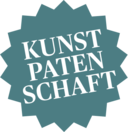Relief: Adoption der Kaiser Lucius Verus und Marc Aurel
Römisch, Mittlere Kaiserzeit, Mitte 2. Jh. n. Chr.
Adoption der Kaiser Lucius Verus und Marc Aurel
The Adoption In the late 1st century AD, it was agreed that the Emperor should henceforth select and adopt during his lifetime the most suitable candidate to succeed him. On 25 February 138 AD such a formal state ceremony was celebrated at Rome: Hadrian adopted his successor, Antoninus Pius, who in turn adopted his successors, Marcus Aurelius and Lucius Verus, i.e. the following generation of rulers. The adoption is accompanied by sacrifices and ritual acts. The emperors’ families and presumably high-ranking civil servants are in attendance and bulls are sacrificed. Sabina, Hadrian’s deceased wife who had died in AD 136, is also depicted. This is not a mistake but typical of Roman historical reliefs. The presence of deities and personifications helps to emphasise the message of the scene. Hadrian died later that year, and Antoninus Pius – meant to act as a placeholder for the two young princes – reigned until AD 161. For the next eight years, Marcus Aurelius and Lucius Verus governed as co-emperors, but following the latter’s death Marcus Aurelius ruled alone until his own death in AD 180. He was called the Philosopher but it was he who abandoned the principle of the emperor adopting his successor(s) and installed his own son Commodus on the imperial throne.
Object data
Object Name
Relief
Culture
Römisch
Period
Mittlere Kaiserzeit
Dated
Mitte 2. Jh. n. Chr.
Site
Ephesos , Celsusbibliothek , Umgebung , Selçuk, Kleinasien, Türkei
Material
Marmor
Dimensions
H. 206 cm, B. 150 cm, D. 51 cm
Image rights
Kunsthistorisches Museum Wien, Antikensammlung
Inv. No.
Antikensammlung, I 864
Provenance
Sultan, Abdul, Hamid, II.; Österreichische Ausgrabungen in Ephesos; Geschenk an Kaiser Franz Joseph; 1911 nachträglich inventarisiert
Permalink (citable Link) to this page: www.khm.at/en/object/51913/
Kunst & Patenschaft
This object is still without a Art Patron. Accept the patronage and make sure that this cultural treasure is preserved for future generations.
Your donation is a direct and sustainable contribution to the scientific documentation, research, restoration, and presentation of the artworks of the Kunsthistorisches Museum Wien.

